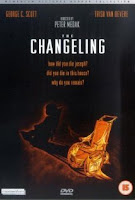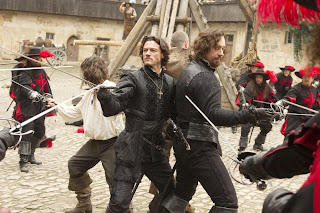With Halloween almost here, it started making me think about all of the scary horror films so many people seem to love. To be honest, I am not a fan of the slasher films. Maybe when Halloween first hit the cinemas back in 1978, it was original -- but now they all just seem like variations on the same theme to me. I much prefer a story that leaves more to my imagination. That's a much scarier place!
So here, in no particular order, are some of the films that I have found frightening.
Psycho (1960)
Norman Bates is a troubled son who believes "a boy's best friend is his mother." Marion Crane is an ill-fated traveler who checks into the eerie Bates Motel wanting only a hot shower and a warm bed. Her journey ends sooner than she planned in the shocking scene that has haunted generations of movie-watchers. The tension and horror mount when a private detective and Marian's sister search for her, and for the true identity of the mysterious Psycho.
Silence of the Lambs (1991)
FBI agent Clarice Starling is assigned to help find a missing woman and save her from a psychopathic serial killer who skins his victims. Attempting to gain a better insight into the twisted mind of the killer, Clarice is sent to talk to another psychopath -- Hannibal Lecter.

Alien (1979)
"In space, no one can hear you scream."
A mining ship, investigating a suspected SOS, lands on a distant planet. The crew discovers some strange creatures and investigate.
The Omen (1976)
A chilling suspense mystery, this riveting tale of the supernatural explores the Biblical prophecy of the warning which will foretell the coming of Armageddon. The final confrontation between the forces of good and evil will begin with the birth of the son of Satan, in human form.
The Changeling (1980)
Scott stars as Dr. John Russell, a composer living in New York City, who moves cross-country to Washington state following the deaths of his wife and daughter in a traffic accident while on a winter vacation in upstate New York. In suburban Seattle, Russell rents a large, old, and eerie Victorian-era mansion and begins piecing his life back together. However, Dr. Russell soon discovers that he has unexpected company in his new home — the ghost of a murdered child. It shatters windows, abruptly opens and shuts doors, and manifests itself during a séance. Russell investigates and finds that the mystery is linked to a powerful local family, the heir of which is a wealthy United States senator.
The Sixth Sense (1999)
"I see dead people." The film tells the story of Cole Sear (Haley Joel Osment), a troubled, isolated boy who is able to see and talk to the dead, and an equally troubled child psychologist (Bruce Willis) who tries to help him.
-- Post by Tracy
Silence of the Lambs (1991)
FBI agent Clarice Starling is assigned to help find a missing woman and save her from a psychopathic serial killer who skins his victims. Attempting to gain a better insight into the twisted mind of the killer, Clarice is sent to talk to another psychopath -- Hannibal Lecter.

Alien (1979)
"In space, no one can hear you scream."
A mining ship, investigating a suspected SOS, lands on a distant planet. The crew discovers some strange creatures and investigate.
The Omen (1976)
A chilling suspense mystery, this riveting tale of the supernatural explores the Biblical prophecy of the warning which will foretell the coming of Armageddon. The final confrontation between the forces of good and evil will begin with the birth of the son of Satan, in human form.
The Changeling (1980)
Scott stars as Dr. John Russell, a composer living in New York City, who moves cross-country to Washington state following the deaths of his wife and daughter in a traffic accident while on a winter vacation in upstate New York. In suburban Seattle, Russell rents a large, old, and eerie Victorian-era mansion and begins piecing his life back together. However, Dr. Russell soon discovers that he has unexpected company in his new home — the ghost of a murdered child. It shatters windows, abruptly opens and shuts doors, and manifests itself during a séance. Russell investigates and finds that the mystery is linked to a powerful local family, the heir of which is a wealthy United States senator.
The Sixth Sense (1999)
"I see dead people." The film tells the story of Cole Sear (Haley Joel Osment), a troubled, isolated boy who is able to see and talk to the dead, and an equally troubled child psychologist (Bruce Willis) who tries to help him.
-- Post by Tracy

















